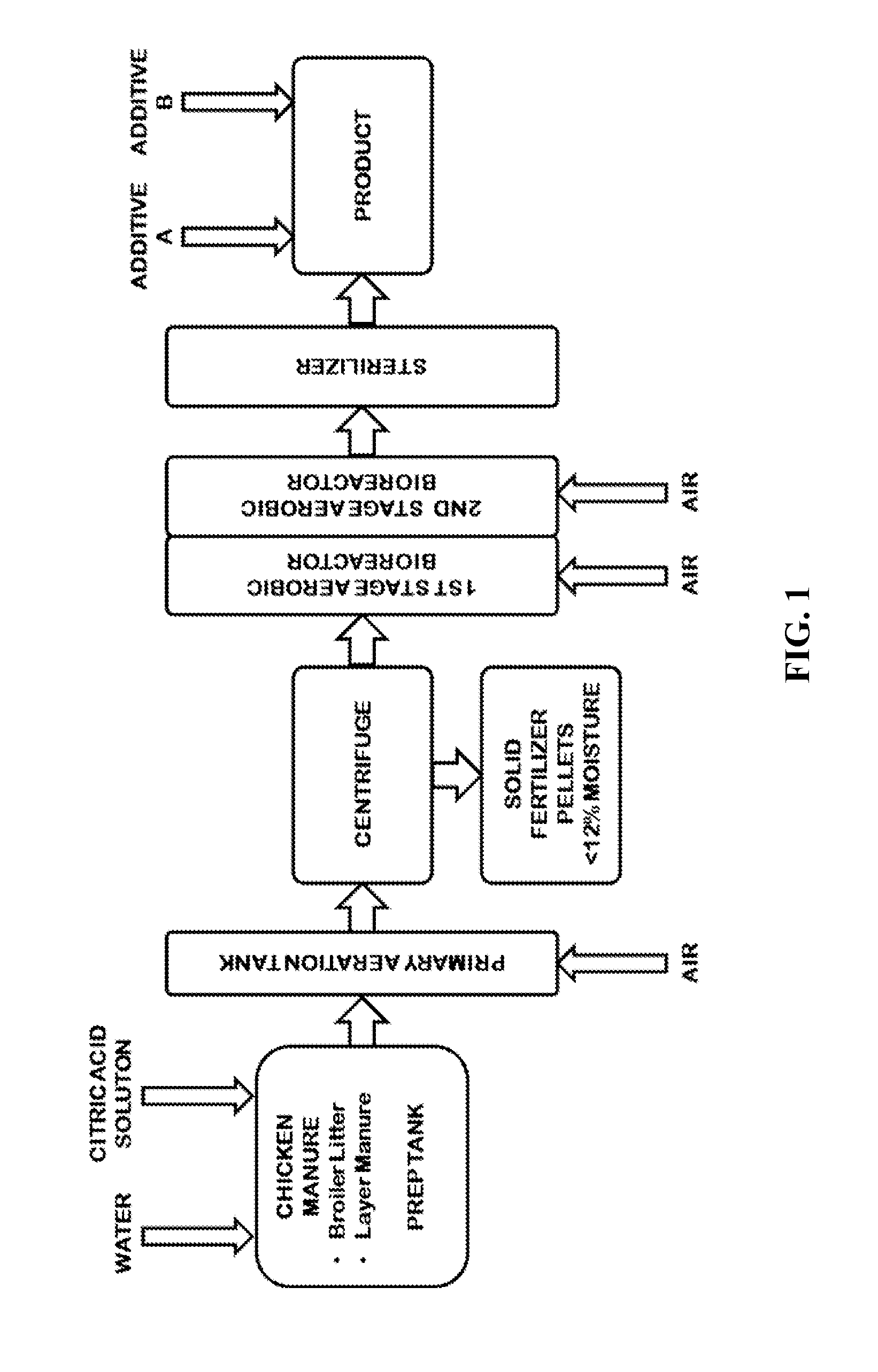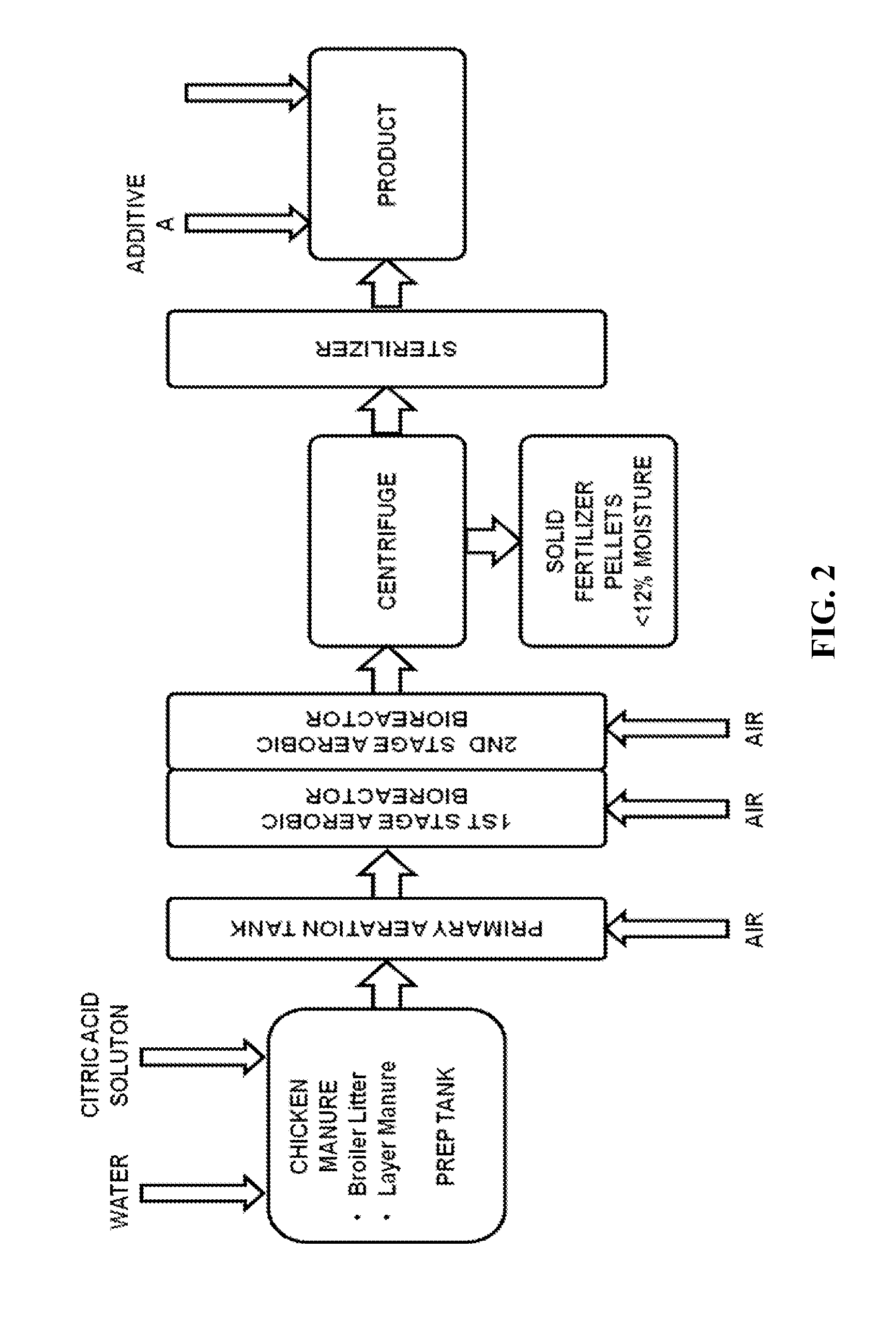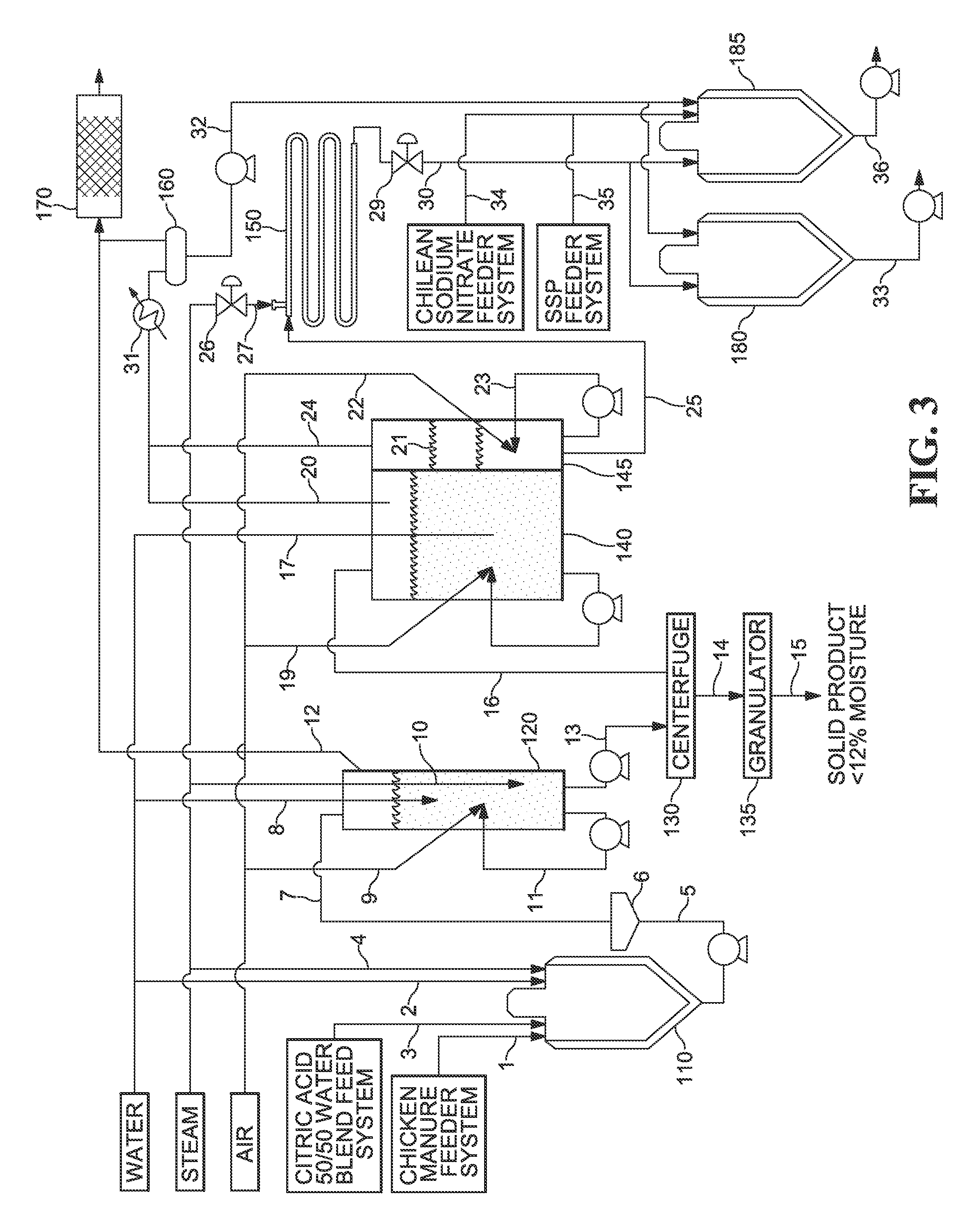Process for manufacturing liquid and solid organic fertilizer from animal waste
a technology of animal waste and processing process, applied in the field of organic fertilizer products, can solve the problems of limiting their use, requiring extended periods of time to breakdown into useful soil materials, and most conventional organic fertilizer products contain less nutrients
- Summary
- Abstract
- Description
- Claims
- Application Information
AI Technical Summary
Benefits of technology
Problems solved by technology
Method used
Image
Examples
example 1
[0211]With reference to the figures, various exemplary aspects of the treatment methods described herein are detailed below. In one aspect, an exemplary block schematic of the process is illustrated in FIG. 1. The exemplary process illustrated in FIG. 1 comprises a prep tank into which chicken manure in the form of, for example, broiler litter and / or layer manure, is added. Water and a 50% aqueous solution of citric acid are added to adjust the moisture content of the chicken manure to a level of at least about 80 wt. % and to adjust the pH of the chicken manure to a value of from about 6 to about 7 to stabilize the waste and capture any resident ammonia as ammonium citrate.
[0212]The mixture is then conveyed to a primary aeration tank, where it is aerated to maintain aerobic conditions. The pH stabilized and aerated waste stream is then transferred to a centrifuge, such as, for example, a decanter centrifuge, wherein solids components are separated liquid components. The separated s...
example 2
[0213]In another aspect, an alternative exemplary block schematic of the process is illustrated in FIG. 2. The exemplary process illustrated in FIG. 2 comprises a prep tank into which chicken manure in the form of, for example, broiler litter and / or layer manure, is added. Water and a 50% aqueous solution of citric acid are added to adjust the moisture content of the chicken manure to a level of at least about 80 wt. % and to adjust the pH of the chicken manure to a value of from about 6 to about 7 to stabilize the waste and capture any resident ammonia as ammonium citrate.
[0214]The mixture is then conveyed to a primary aeration tank, where it is aerated to maintain aerobic conditions. The pH stabilized and aerated waste stream can then be transferred to the first stage of an aerobic bioreactor, wherein the waste material is heated and sparged with air for a period of time to promote thermophilic bacteria and to maintain aerobic conditions. After completion of the first stage of the...
example 3
[0216]FIG. 3 illustrates a detailed exemplary treatment process. In such an exemplary aspect, bulk waste product containing manure is delivered in bulk 1, generally by a tractor-trailer, dump truck, conveyor truck or the like, and transferred to a prep tank 110, wherein the waste product is sprayed with water 2 and an acid, such as an aqueous 50% solution of citric acid 3. The resulting mixture is transferred using a cavity pump 5 to a vibratory screen 6 to separate stones and other undesirable materials from the mixture. The mixture is then transferred 7 to a primary aeration tank 120, where the mixture is sparged with air 9, steam 10 is injected to raise the temperature of the mixture to about 65° C., and water 8 is optionally added. A recirculation pump 11 can optionally circulate material within the aeration tank. Gases from the aeration tank, such as, for example, sparged air, can be conveyed 12 to a biofilter 170 before being vented to atmosphere. Solids from the aeration tank...
PUM
 Login to View More
Login to View More Abstract
Description
Claims
Application Information
 Login to View More
Login to View More - R&D
- Intellectual Property
- Life Sciences
- Materials
- Tech Scout
- Unparalleled Data Quality
- Higher Quality Content
- 60% Fewer Hallucinations
Browse by: Latest US Patents, China's latest patents, Technical Efficacy Thesaurus, Application Domain, Technology Topic, Popular Technical Reports.
© 2025 PatSnap. All rights reserved.Legal|Privacy policy|Modern Slavery Act Transparency Statement|Sitemap|About US| Contact US: help@patsnap.com



